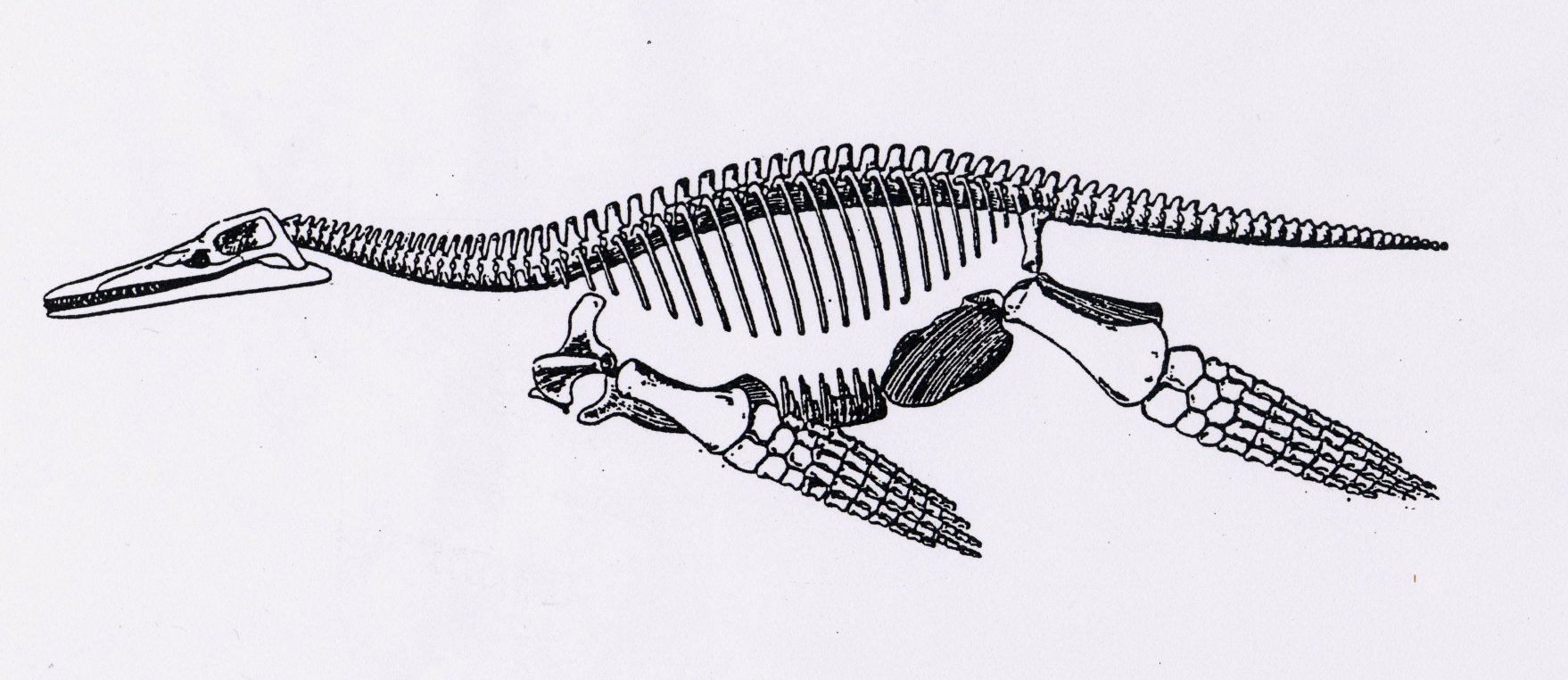
|
|
|
|
|
|
|
|
|
|
|
|
|
|
|
|
|
|
|
|
|
|
|
|
|
|
|
|
|
|
|
|
The Watermead Pliosaur
A HISTORY OF BUCKINGHAMSHIRE IN TWELVE OBJECTS

ABOVE: The full skeleton of a Pliosaur, which was 25ft long. BELOW RIGHT: Local geologist Michael Oates and his son examining the bones found at Watermead on the northern edge of Aylesbury in 1987.
The Watermead Pliosaur lived 152 million years ago, when today's Vale of Aylesbury was under the sea.
 IN THE SUMMER of 1987 local geologist Michael Oates spotted some large fossil bone fragments during excavation work on the new Watermead housing development on the northern edge of
Aylesbury. They were sticking out of a two-metre deep trench in an area due to become an artificial ski slope.
IN THE SUMMER of 1987 local geologist Michael Oates spotted some large fossil bone fragments during excavation work on the new Watermead housing development on the northern edge of
Aylesbury. They were sticking out of a two-metre deep trench in an area due to become an artificial ski slope.
Realising the size and significance of the find, he alerted the Buckinghamshire County Museum, and the County Archaeologist, Mike Farley, quickly responded. A small team of diggers from the ‘Aylesbury Past and Present’ project spent three days at the end of a hot June excavating and recording the position of the bones.
They found around 80 bones from a 152-million-year-old pliosaur, a top predator of the Jurassic seas. While other prehistoric marine reptiles – such as plesiosaurs and ichthyosaurs – fed on the smaller belemnites, ammonites and fish, pliosaurs were higher up the food chain: they fed on the plesiosaurs and ichthyosaurs.
As the discovery of a large marine reptile at Watermead might suggest, Buckinghamshire has spent large periods of its prehistoric past under the sea. The Kimmeridge Clay, in which Buckinghamshire's pliosaur was found, is a typical marine sediment formed from tiny clay particles washed out from far-away land, much like the North Sea today. The Kimmeridge Clay is soft and weathers down easily. It underlies the flat expanse of Aylesbury Vale, along with the older Oxford Clay and the younger Gault Clay.
There are no natural exposures of Kimmeridge Clay in the County but any excavations have the potential to reveal a host of fossilised marine life, ranging from tiny seashells, larger ammonites and belemnites to the reptile ichthyosaurs, plesiosaurs and pliosaurs. Recent research on the marine reptiles of the Kimmeridge Clay in the UK suggests that the Watermead pliosaur is one of four possible species of Pliosaurus, but due to the incomplete nature of its remains it is impossible to say which one.
The Watermead pliosaur bones found were mainly ribs and the remains of massive vertebra. When laid out, these gave an estimated length of 25ft (7.5m) for the reptile. Unfortunately, no remains of the skull were found, which is a pity as this would have been 6ft (1.9m) in length with teeth up to 12 inches (30cm) long.
The bones are today in the County Museum's store at Halton, with a few choice specimens on permanent display at the Museum in Aylesbury.

ARTICLE BY MIKE PALMER.
The Watermead Pliosaur is Object 1 in the series ‘A History of Buckinghamshire in Twelve Objects’, marking the 170th anniversary of the founding of the Buckinghamshire Archaeological Society in 1857. Most of the objects in this series are held by Bucks County Museum.